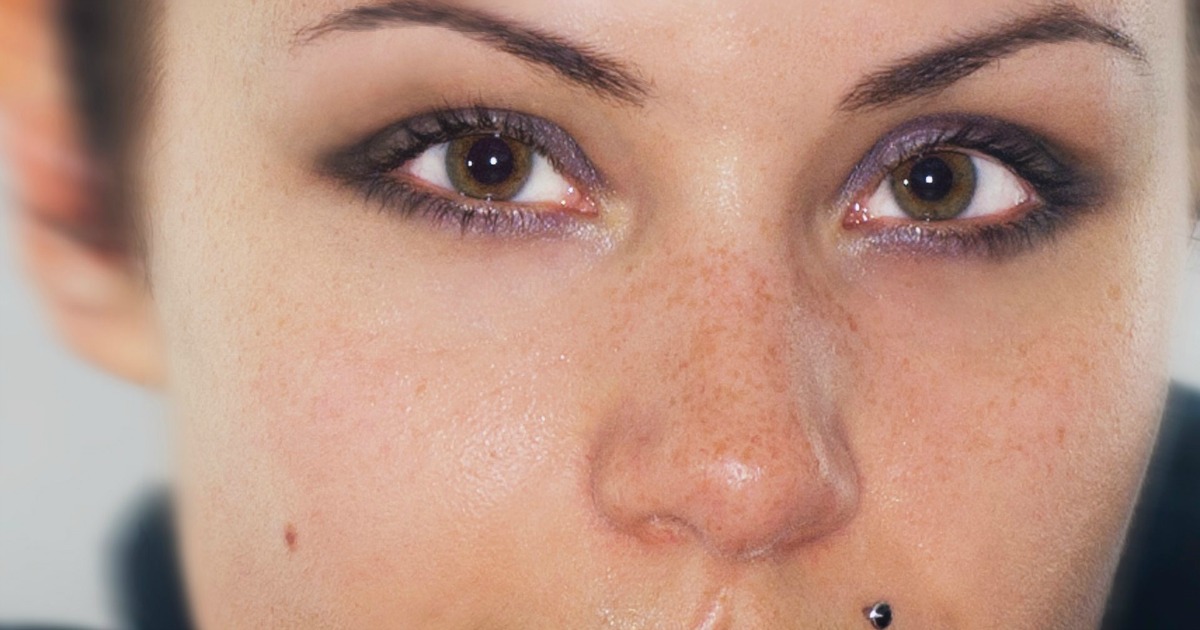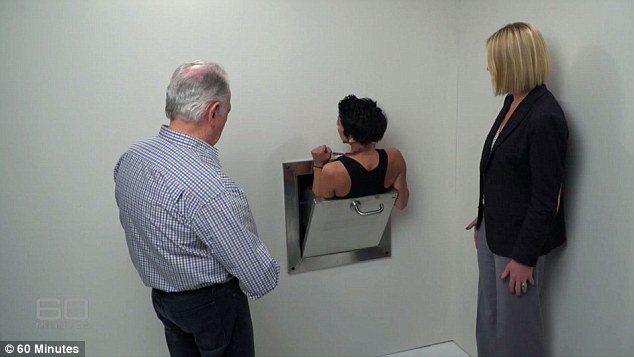By C.W.S.
You are likely familiar with the still-unexplained death of Elisa Lam, the 21-year-old Canadian college student who was found dead in a water tank on the roof the Cecil Hotel in Los Angeles. Theories around her death range from the mundane, that she had a manic episode or did not take her bipolar medication correctly, to the wild: government conspiracies, paranormal possession, and of course, murder. In Melbourne, Australia, another young woman’s tragic end has puzzled a family since 2010. Phoebe Handsjuk's death was blamed on a combination of sleeping drugs, alcohol, and depression but holds more evidence of foul play than Elisa Lam's case.
Phoebe was just 24-years-old when her body was found at the bottom of a garbage chute in the basement of a luxury apartment building on the evening of December 2, 2010. She survived the 30 meter fall, but suffered deep gashes from the compactor blades and died on the floor of the refuse room from loss of blood. With the recommended dose of the sleeping drug Stilnox, similar to Ambien, and a blood-alcohol level at three times the legal limit, the police coroner made the determination that Phoebe climbed into the garbage chute to commit suicide while in a drug and alcohol-induced stupor. Then, in a 2013 inquest, he ignored his own assisting counsel, who asserted it was possible a third party was involved, and determined yet again that there was no foul play in her death.
There are a few serious problems with this narrative, mainly that the garbage chute was a mere two feet by nine inches and incredibly difficult to enter. There were also no fingerprints found on the handle or outside of the chute, and it appeared to be wiped clean.
Phoebe’s grandfather, retired police detective Lorne Campbell, would not accept the coroner’s assertion that Phoebe had climbed into the chute herself, and set out to piece together the events on his own. “Right from the start,” he said, “I believed she had been murdered.” Both he and Phoebe’s mother, Natalie, have worked tirelessly in pursuit of the truth.
Who was Phoebe Handsjuk?
Phoebe Handsjuk
Like many women who have died tragically, two words used often to describe Phoebe Handsjuk are beautiful and troubled. She certainly was beautiful; she had a piercing, confidence gaze, and at the time of her death her dark hair was cut stylishly short. And she had her troubles, yes. Her bouts of serious depression and drug and alcohol abuse concerned family and friends. But there is another word that is used consistently to describe Phoebe. By all accounts, she was extremely creative: an obsessive artist, constantly journaling poems, painting, and drawing.
On a family-created website seeking justice for Phoebe, one friend described her as “wild, engaging, witty, creative and intelligent.” She went on to say, “Phoebe was the girl that when she walked into a room everybody noticed her. It wasn’t that she ever went out of her way to seek attention, it was just that she had this amazing presence about her that you could not ignore. Once you met Phoebe, you never forgot her.”
Phoebe had long battled depression and substance abuse. “Phoebe started experimenting with drugs at quite a young age. She struggled with alcohol and used it to overcome her anxieties. She suffered from depression and was taking medication and seeking counseling to assist her,” the About Phoebe section of the website reads. She is described as a loyal friend, as never judgmental, as protective, cheeky, and funny. It seems that Phoebe was one of those people that just glowed with an otherworldliness, a charm and magnetism that exceeded normal personalities.
Phoebe also had a physical side. An avid and talented climber and martial artist, the coroner, Peter White, alleged that because of Phoebe’s “penchant for climbing,” she was able to enter the chute even in a very intoxicated state.
She had also been in a relationship described by some as “controlling.” Phoebe had a history of dating much older men, and Ant Hampel was no different. When they started dating, he was almost 40, and she was 23. At the time of her death, Phoebe was living with Ant in his luxury apartment.
What happened that day?
The day before her death, Phoebe, or someone who had the iPhone she shared with Ant, sent a bizarre mass text to her family and to Ant. It read:
'HI FAMILY, I am in bed about to sleep and when I WAKE I will transform into the most incredible human bein [sic] you've ever seen! … (not) I will go to hospital. It's safer there and I hear the special tonight is tomato soup … Delicious! Nutritious! I love you all very much but not enough to send an individual text. Sorry about that but time is sleep and I must b on my way … Merrily, merrily, merrily. Life is but a dream. Xo.''
Ant Hampel and Phoebe Handsjuk
Ant Hampel was a prominent events promoter who surrounded himself with rich and attractive friends, to whom Phoebe claimed to feel inferior. He met Phoebe while she was working at a hair salon he frequented. The son of retired Supreme Court Judge George Hampel, and stepson of serving County Court Judge Felicity Hampel, Ant was never considered to be a suspect in Phoebe’s death. No one was.
The relationship had been rocky for a while, with Phoebe attempting to leave Ant on several occasions and, according to Phoebe’s grandmother, always going back to him. On the morning before her death, Ant claims that Phoebe was in “recovery mode” after a night of heavy drinking and was sleeping when he left. CCTV footage showed Phoebe leaving the apartment before noon because of a fire alarm evacuation. She stumbles a little on the tape, holding the leash of Ant’s bull terrier.
Phoebe and Ant had plans that evening to go out for dinner with Phoebe’s father. Ant claims he arrived home to their apartment a little after 6pm. Inside he found broken glass on the floor and blood on the mouse and keyboard of their shared computer. Her purse, wallet, and keys were all on the counter of the kitchen, but Phoebe was nowhere to be found.
“I was becoming very concerned at that point,” Ant told police. Despite this concern, he proceeded to order takeout from the same restaurant they were supposed to have dinner at later in the evening. He had a beer and went on the internet. When the food arrived at the door, the deliveryman told Ant that there were police in the lobby.
The coroner ruled that Phoebe climbed into the garbage chute sometime between 12:03pm and 7pm. She was found by a concierge in the refuse room with a trail of blood leading behind her just after 7pm. Her pants were around her knees, but there was no evidence of sexual assault, and it was unclear how and when her pants were pulled down. They were able to tell that she had entered the chute feet first. Police quickly assumed that her death was a suicide and seemed to approach the investigation only through this lens.
Police Failure and the Family’s Investigation
Phoebe’s grandfather would not accept the coroner’s ruling, and took issue with the way police handled the initial investigation. The police failed to acquire the CCTV footage that would have proven once and for all if someone else could have been involved. They also did not seize Phoebe and Ant’s computer until months later, and the SIM card that police told Ant to keep from their shared phone went missing. Phoebe’s personal Nokia phone was never found. They also failed to test large shoe prints that led away from the apartment and did not DNA test any of the blood found in the apartment. And what could account for the lack of fingerprints on the outside of the chute?
Lorne took the investigation into his own hands, asking two of her friends, who were similar in size and athleticism to Phoebe, to attempt to enter a replica of the tiny garbage chute the way that the coroner claimed she had before her death. Both women were eventually able to get into the chute, but it proved incredibly difficult—and they were sober.
In 2013, Phoebe’s family was able to raise the $50,000 needed to cover the legal fees of an official inquest into her death. However, the result was less than satisfactory, with the coroner again ruling that there was no foul play involved. Assisting counsel Deborah Siemensma had advised coroner Peter White that the bruises on Phoebe’s arms, the blood inside the apartment, and the fact that it appeared the chute had been wiped clean of fingerprints was enough to point to the possibility of murder. In an unusual event, the coroner ignored his assisting counseling, agreeing with Ant Hampel’s barrister, that there was no evidence to point to anything other than Phoebe taking her own life—though this time they determined it could have been accidental rather than a suicide.
After Phoebe’s death, Ant Hampel acted in ways considered strange by friends and family, including attempting to block the inquest. However, it doesn’t seem like Phoebe's family is focused on him as a suspect. “I think she may have said something to upset someone, I don’t know who but I think that she’s been injured and whoever was involved has panicked and tried to get rid of her,” Natalie said. Lorne seems to think her death could have had something to do with Melbourne’s drug trade. Regardless of who is to blame, the family has not wavered from their position that Phoebe was murdered.
At this point, it is unlikely that official justice will be served, and Natalie is incredibly disappointed with the way the police and court systems have failed her family. “Natural justice is now the only thing we’re going to get out of this. Karma will come to whoever has been involved, we just have to be patient.”
For more information on the death of Phoebe Handsjuk, check out the comprehensive podcast Phoebe’s Fall.
If you have any information surrounding the death of Phoebe Handsjuk, please contact her family here.




